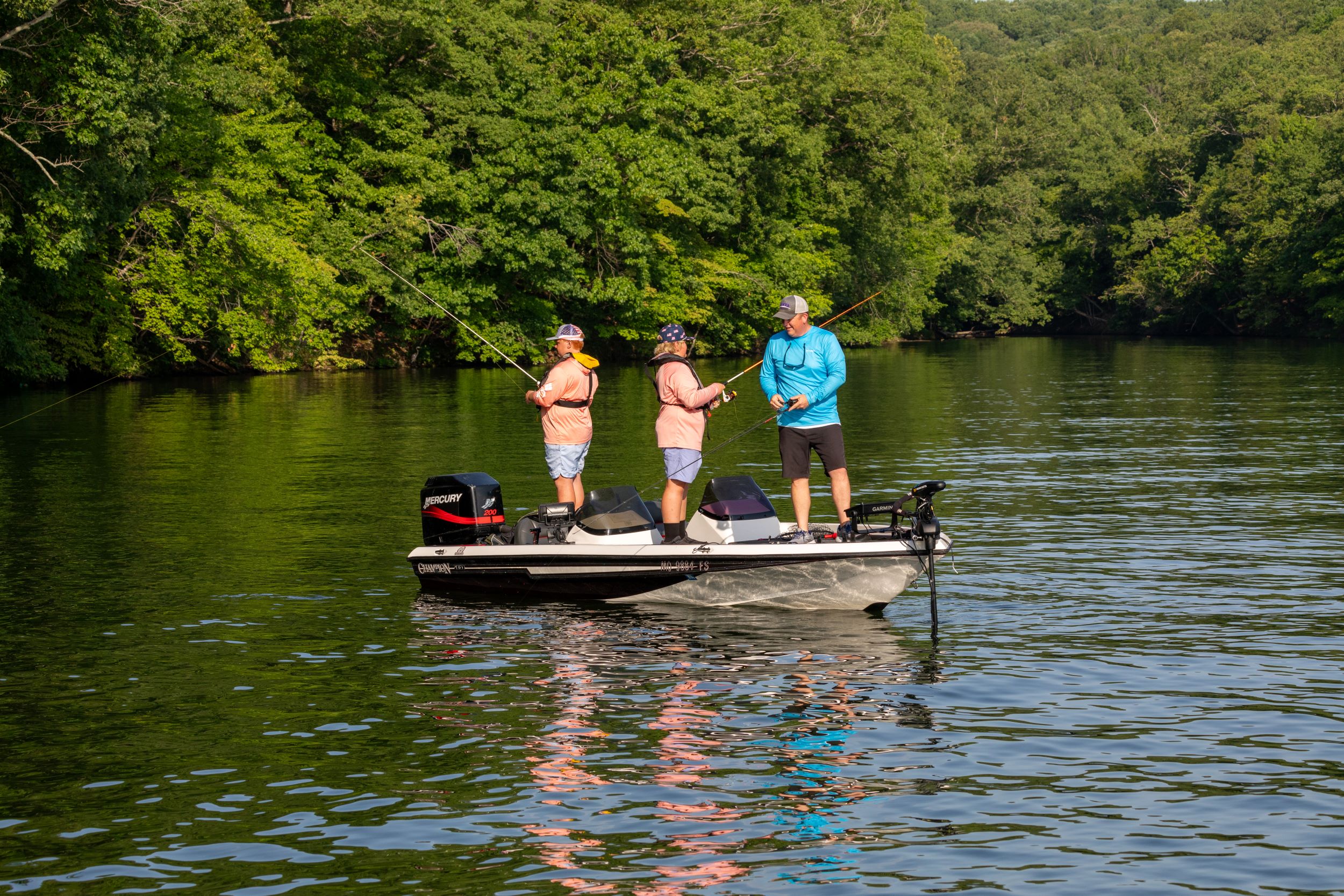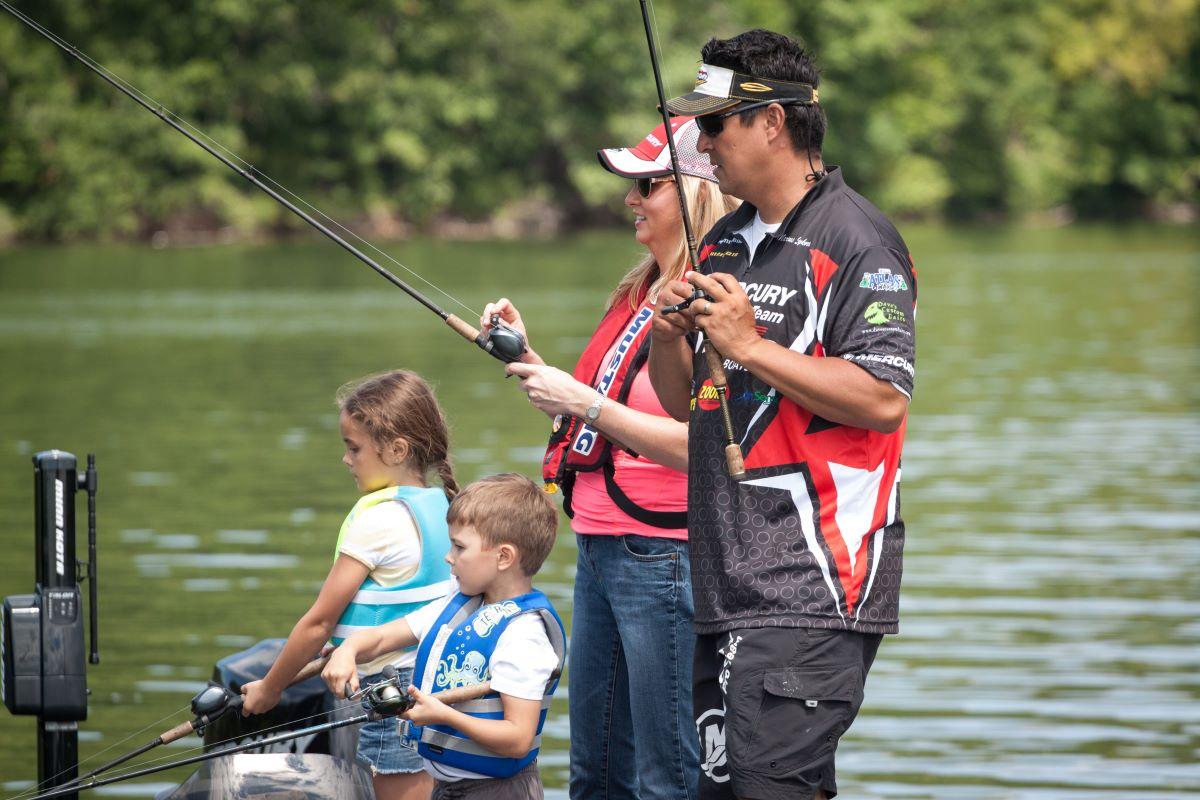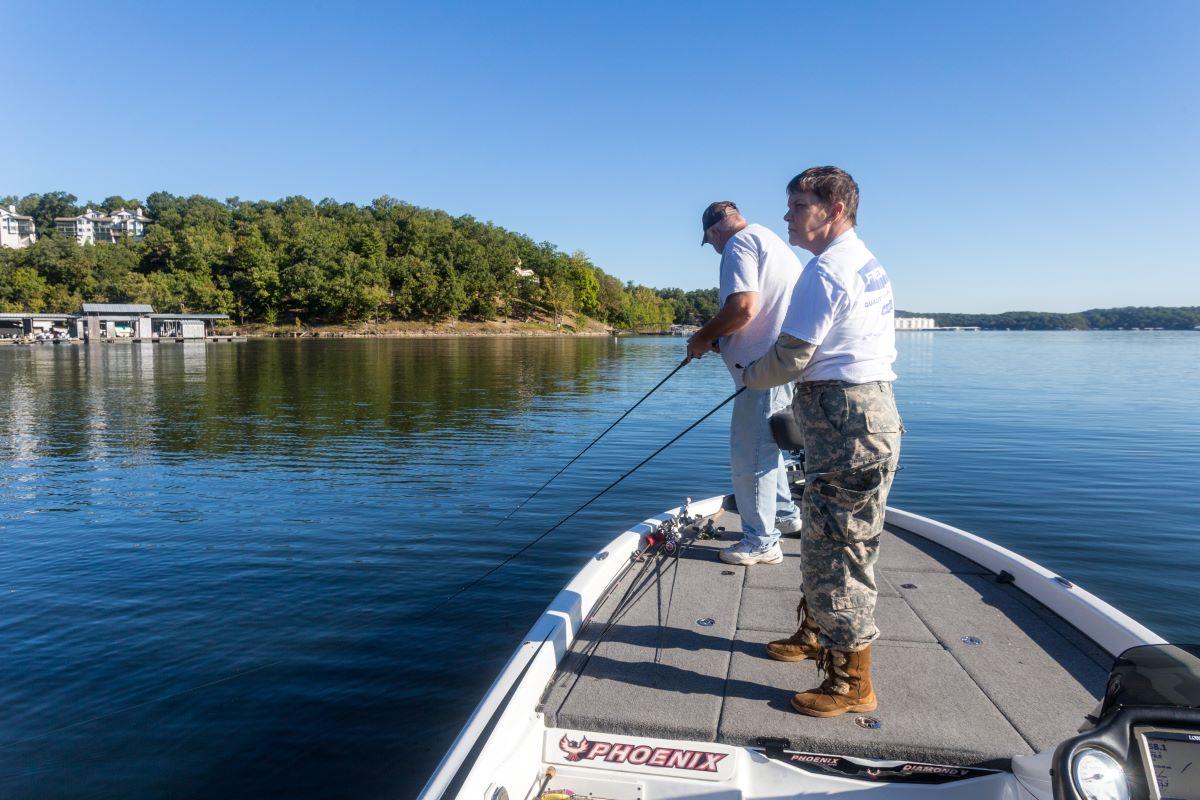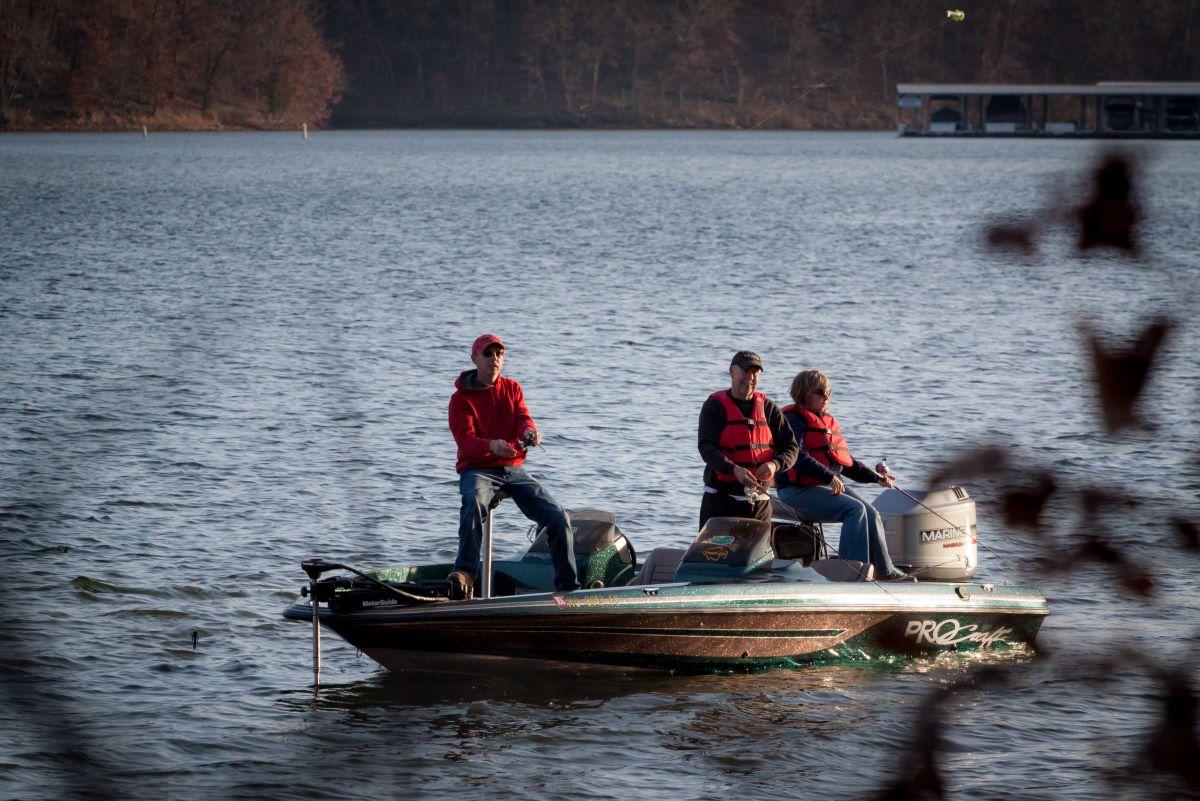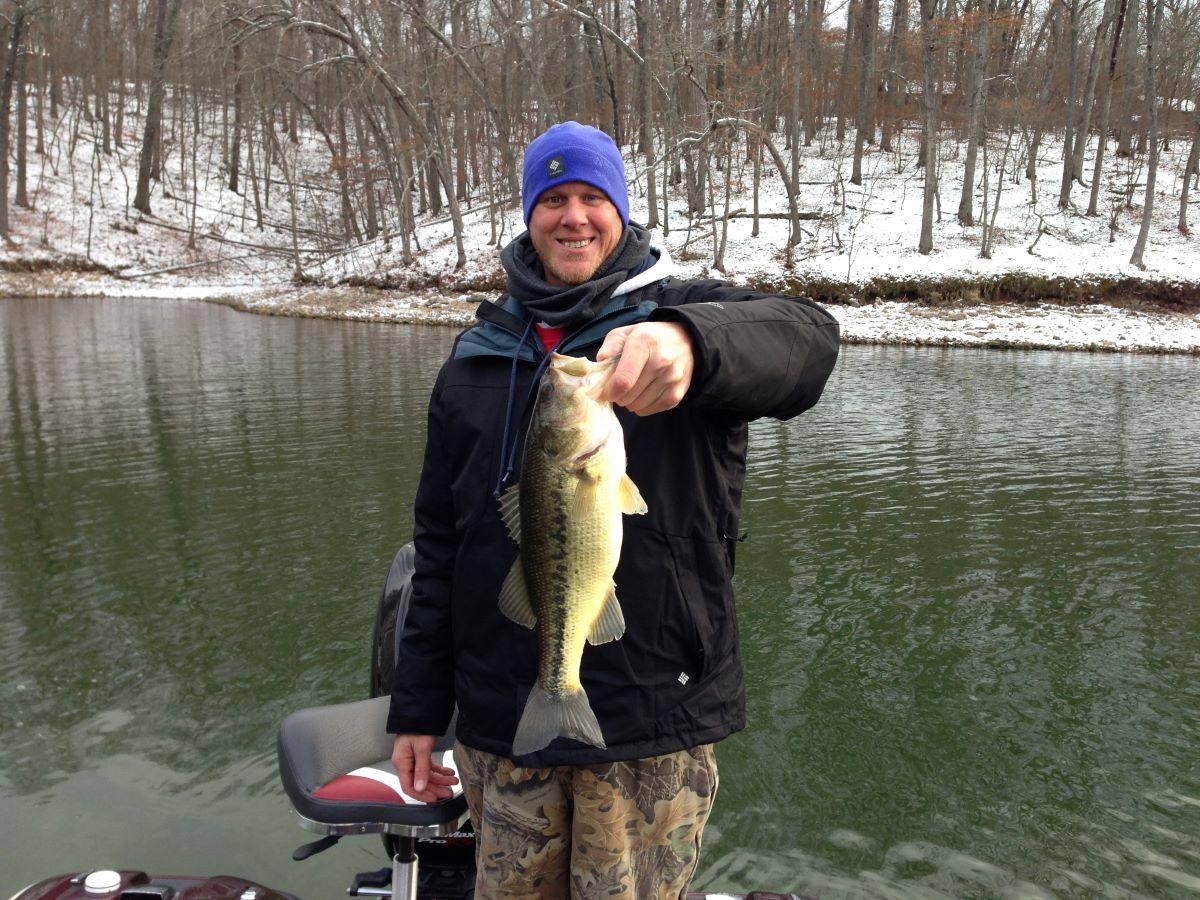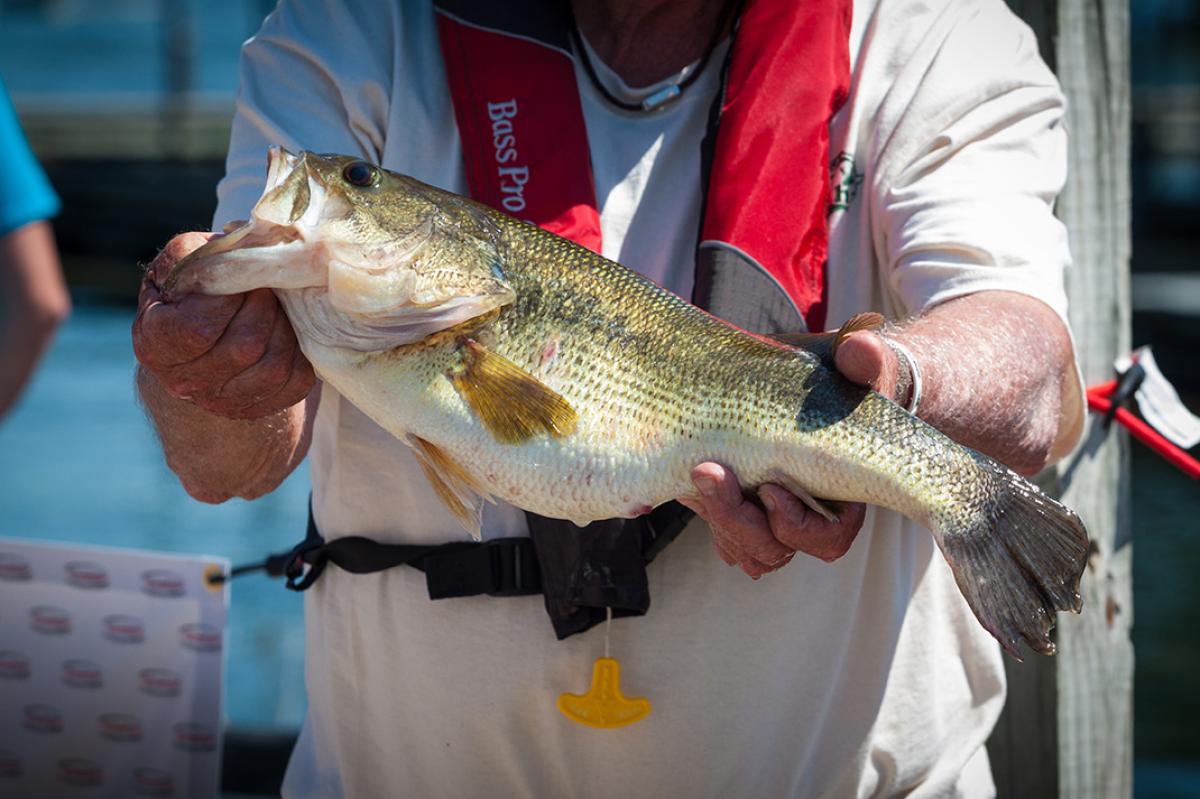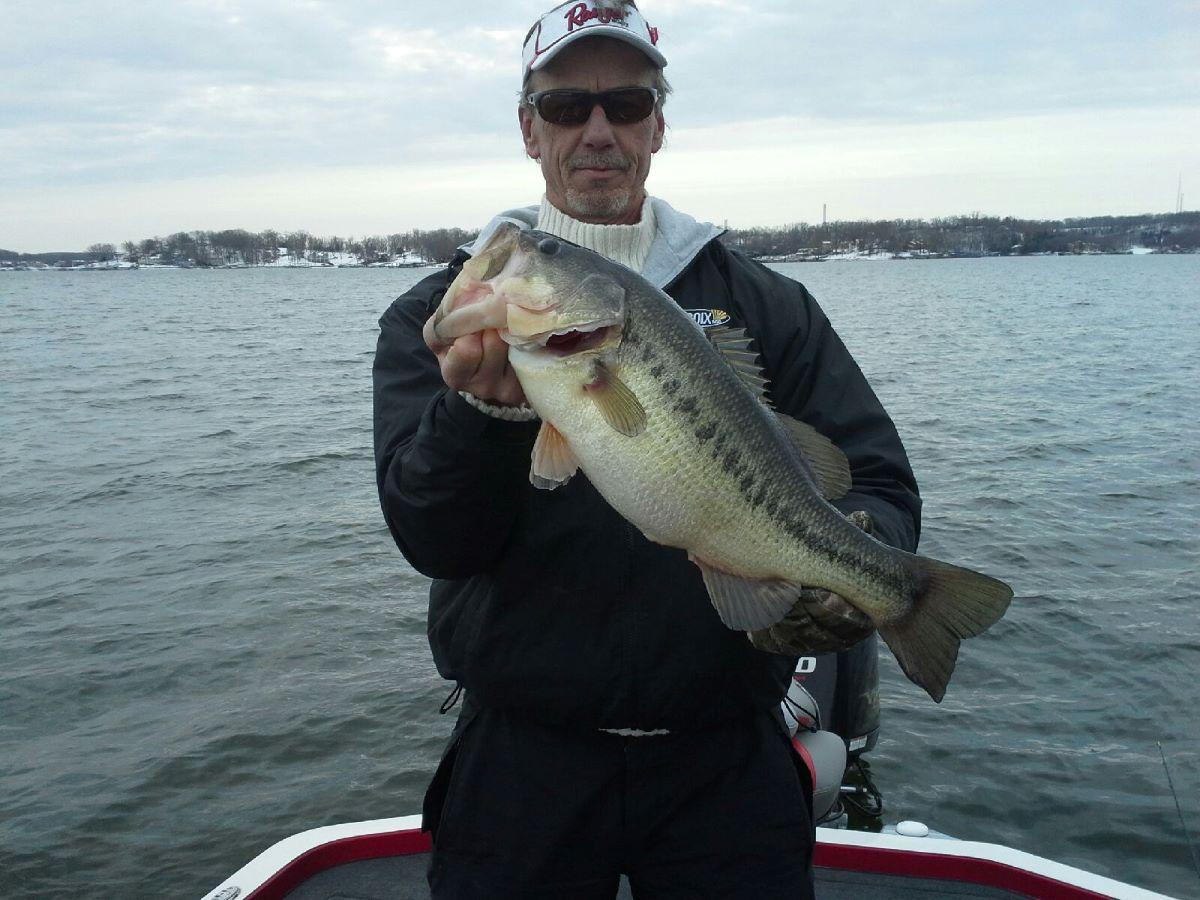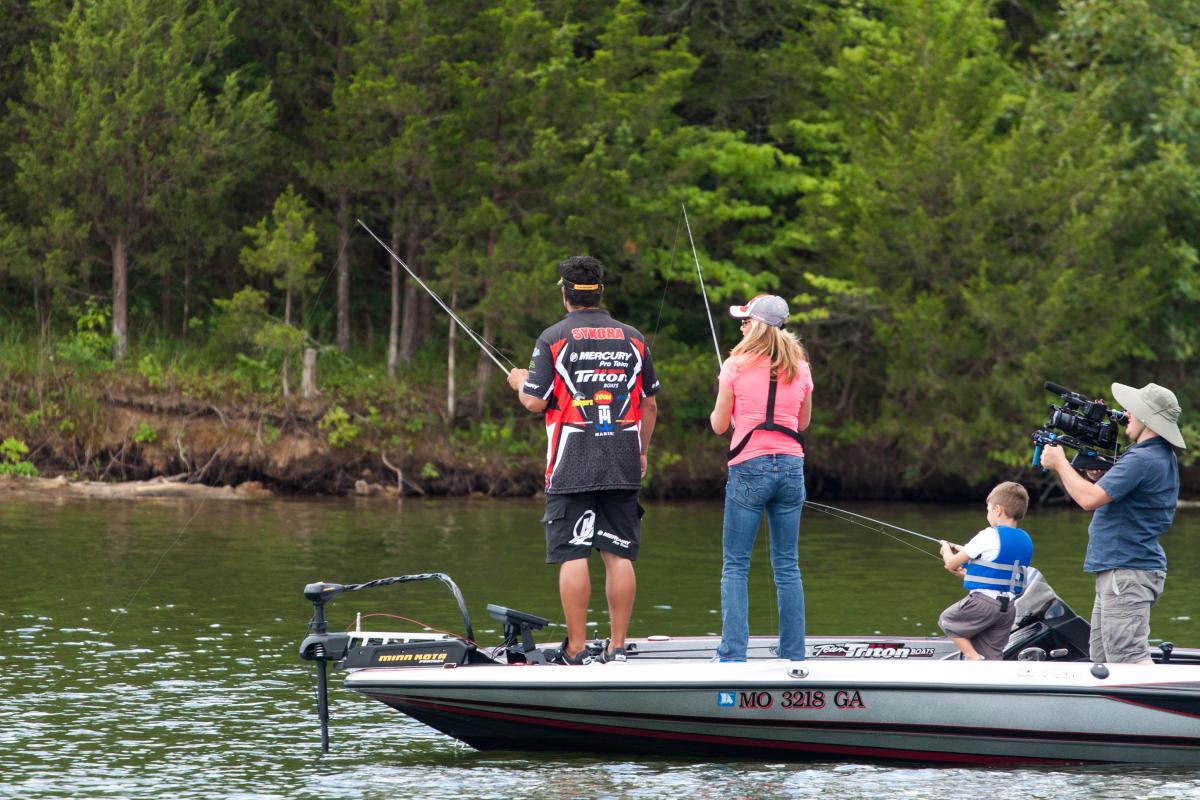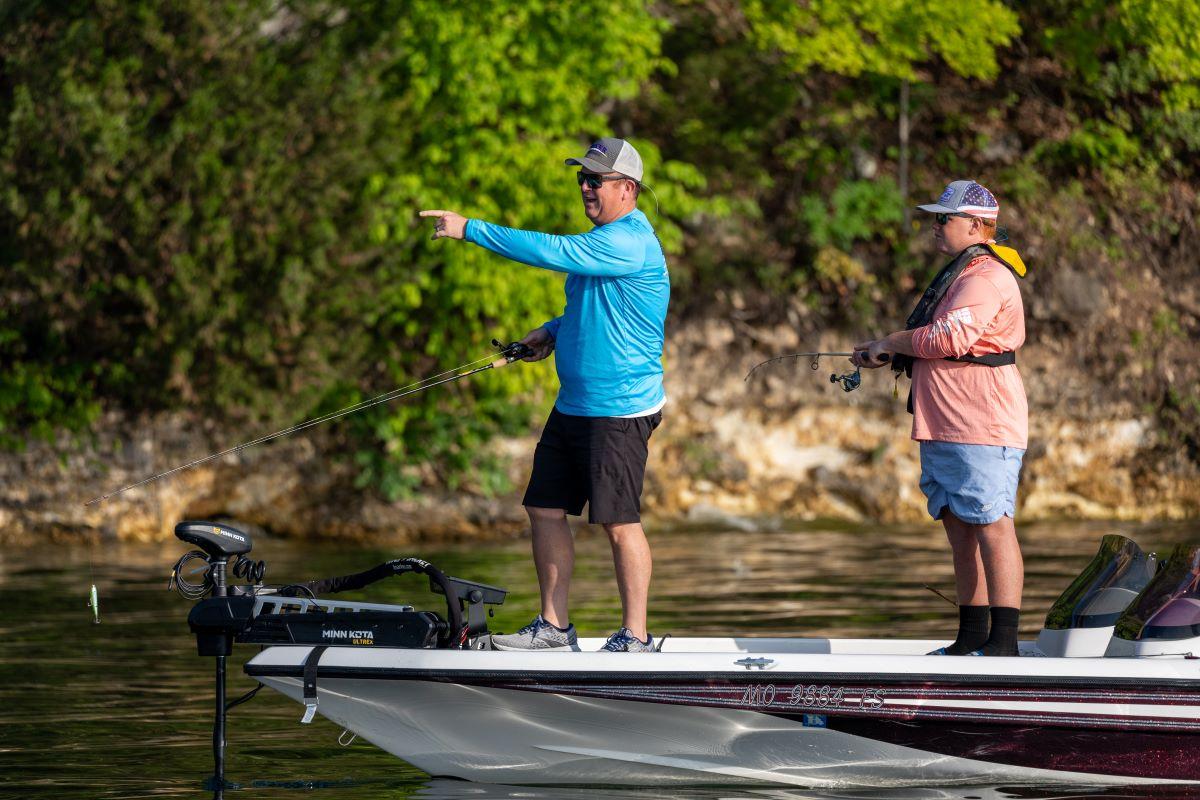March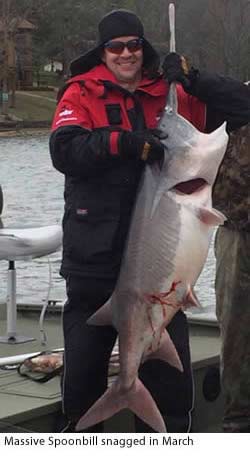
The month of March at Lake of the Ozarks is often one of wide variation in temperature and weather conditions. Anglers are just as likely to find themselves waiting impatiently for the ice to thaw as they are to be applying sunscreen on a warm spring day. The capricious nature of the month that straddles winter and spring makes for exciting fishing. Because of the rising daily temperatures and increased hours of sunlight this month, water temperatures begin to rise, starting the month generally in the mid to upper 30s and ending the month in the upper 40s and low 50s.
Fishing for bass this month is dominated by the term “Pre-Spawn”. At the beginning of March you may find bass in their winter haunts, but as the month progresses, big fish will start feeding and moving towards their spawning areas. At the beginning of this month jerk baits and Alabama Rigs will be the most productive lures to catch big fish. As the water temperature begins to rise, the fish will start looking for crawfish imitators such as a finesse jig or a Wiggle Wart. Paying attention to the changing conditions is vital to a successful day of fishing during this month as there are many different ways to catch big fish. For daily expert reports on what the bass are biting this month check out bassingbob.com.
March also marks the beginning of spoonbill season. Each year thousands of anglers flock to the Lake of the Ozarks for a shot at hooking into a pre-historic giant! These fish can grow to weigh well over 130lbs and are plankton feeders, so they do not chase after traditional lures. Because you cannot catch them with traditional methods, anglers will target these big fish with heavy snagging equipment. During this month the spoonbill will begin to group up in deep holes in the upper river portions of the Lake of the Ozarks and the Osage River. This is a unique angling experience as this is one of few places in the world where you can find paddle fish (spoonbill). Check out the Crappie portion of bassingbob.com to find how-to articles and tips for how to snag into one of these giants.
April
Each year in April the Lake of the Ozarks’ shoreline springs to life, giving anglers an especially great view of the blooming redbuds, dogwoods and wildflowers that dot the landscape. The warming temperatures and increasing hours of daylight tempt fishermen to get back in their boats for another great season of fishing. Anglers look forward to April because the warmer days and water temperatures start to make all of the fish more active. However the two most popular species for this month are bass and crappie.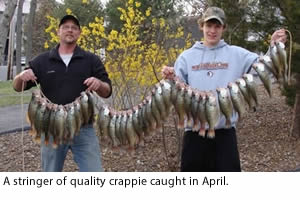
This is one of the most popular months for bass fishing because the rising temperatures push all of the fish out of the deeper water into shallow spawning areas. During the beginning of this month the fish will still be in a pre-spawn feeding mode, these fish are best caught with spinnerbaits, crankbaits, and Carolina Rigs. As the water temps climb into spawning temperatures you will find that you can catch bass on just about any lure that you own. The best bait to throw at this time is the one that you have most confidence in. However, if you begin to struggle with your confidence bait, make sure to check out bassingbob.com for expert advice, videos, and daily fishing reports.
The Bass are not the only fish that bite this time of the year. April also marks the beginning of the crappie spawn. If you time this bite right, you can have one of the most incredible days of fishing for these tasty critters. Just like the bass, all of the crappie will migrate to the shallows for their annual spawning ritual. To find these fish, look for protected areas on the bank such as a shallow walkway, behind a dock, or a shallow brush pile. You may target these critters with a variety of jigs and minnows. You definitely don’t want to miss out on this bite, so check out the Crappie reports on bassingbob.com to find out when the time is right!
May
The Lake of the Ozarks really comes alive in May. Everywhere you look, you’ll see signs that things are shaping up for another summer of fun in the sun. Anglers take to the water to enjoy the excitement of fishing during the spawn. Vacation home owners come down to air out their houses and start up their boats in anticipation of time spent with family and friends. This is truly a great time to get out on the water.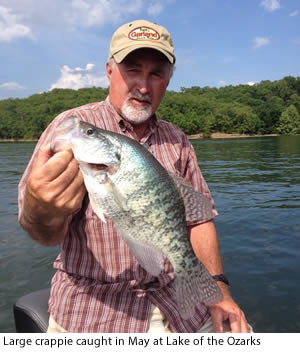
At the beginning of this month you will find bass in the peak of the spawn in shallow bedding locations. This is great time to catch numbers of fish as there are a ton of aggressive male bass guarding their nests. You can target these fish with a variety of lures in shallow pea gravel spawning pockets. As the month progresses the fish will finish spawning and will begin to transition to there post spawn-feeding phase. At this time, bass have been using all of their energy to spawn and protect their nest, but will now focus their efforts onto feeding heavily. This is one of the best bites of the year because the bas are super aggressive and will viciously attack a variety of lures. A great way to target these bass is with a top-water lure like a Zara Spook. You want to work the spook back to the boat with a walking action(walk the dog). This walking action mimics the action of a wounded shad on the surface and is irresistible to any aggressive bass in the area that are looking for an easy meal.
The beginning of May is also a great time to catch a big mess of crappie! During this month most of the crappie will be found in the shallows for their annual spawning ritual. To find these fish, look for protected areas on the bank such as a shallow walkway, behind a dock, or a shallow brush pile. You may target these critters with a variety of jigs and minnows. If you would like to learn more about catching both crappie and bass on Lake of the Ozarks during the month of May, check out bassingbob.com.
Spring Paddlefish Season
Each spring thousands of anglers travel to the Lake of the Ozarks in hopes of hooking into a pre-historic giant. The American paddlefish has been known to inhabit earth for over 300 million years, and can only be found in the lakes, rivers, and streams of the Mississippi river basin. While you can find paddlefish all throughout the Midwest, the Lake of the Ozarks and Osage River Basin is home to one of the largest paddlefish populations in the world. These creatures are rather bizarre in appearance, with a large mouth and a long tapering bill.
The paddlefish is also unique in that they are filter feeders and do not chase traditional lures and baits. Since you cannot catch them with traditional methods, anglers will target these fish with a heavy snagging approach. To start out you will need a heavy 6-8ft snagging rod paired with a large level wind reel that is spooled with 80-100lb braided line. For tackle you will need a 16-20oz bank sinker and a large 10/0 -12/0 treble hook.
Snagging season runs from March 15th-April 30th. At this time the paddlefish will be migrating up the major rivers and tributaries in search of spawning grounds. The best place to locate these fish is in the deep holes of the main river channel. One popular way to locate these fish is to use a sonar graph to look for large arches, which indicate big spoonbill in the area. Once you think you have located a good spot, position your boat in the channel and drift slowly at 1.5-3mph. Drop your rig down and make a sweeping action with your rod until you hook up. If you happen to catch one, make sure that the fish is a legal 34” keeper by measuring it from the eye to the fork in the tail.
Sweeping a big rod all day may seem like a lot of work, but these fish can grow to well over 100 pounds and they put up a hefty fight once hooked. So if you put in the work and have a little luck on your side, you may be rewarded with the biggest fish you have ever caught. Check out the Crappie section of bassingbob.com for a great demonstration of how Lake of the Ozarks Fishing Guide Jack Uxa goes after these monster fish.
Spring River Fishing
Here at the Lake of the Ozarks we are blessed to have such a large and diverse fishery. The Lake stretches 92 miles from end to end, and has several large tributary arms which all fish differently. One of the most underrated and secluded sections of this Lake is the 30 mile long stretch of river leading up to Truman Dam. This area is vastly unalike every other portion of the lake. So Bassingbob.com decided to sit down with David Ryan, who is a tournament veteran with extensive knowledge and experience up the river, to get his thoughts on the secluded upper reaches of the lake.
We first asked Dave what sets the river apart form other areas of the lake? “The one thing that makes the river easier to fish is that it is very aesthetically pleasing. You can see everything in front of you. The flats stick out better, the rock changes are very prominent, and it just lays out to where it is easier to fish.” We then asked Dave if there was a certain time when he liked to start fishing the river? “Well it has a lot to do with precipitation and how warm of weather we have leading into the spring. The key water temperature I look for that get the river fish fired up is around a consistent 42-45 degrees.” He emphasized that the consistent water temperature will be the temperature that your boat reads first thing in the morning, and not after the sun heats the water up late in the day. Dave also added “Whenever it starts happening up there, I am targeting rock changes: like from bluff to chunk rock, or chunk rock to pea gravel. Those places are typically where the river fish will stack up. But you also need to keep in mind that water level and current generation are both factors that affect how these fish will position themselves and when they will bite.”
In March of 2011, Dave used his river fishing expertise to earn him a FLW Everstart Series victory. Dave noted that steep rock transition banks were key to his victory, but an even bigger key was his Black Market 110 Jerkbait. “The Missouri Shad color is dangerous up that river. Out of the fifteen fish that I weighed in the three-day competition, thirteen of those fish came off of the Missouri Shad Black Market 110. It just looks natural like a shad to the fish, and that’s why it works so well.” Some other early spring lures that Dave will use up the river is one of his custom painted Wiggle Wart bodies, and a 1/2oz Chompers Rattling Flipping Jig.
While Dave loves to fish the river in the earlier parts of spring, he also likes to fish it through the first few weeks of April as the water starts to warm up. “Once we start to get to the first week of April, those big fish will start to stage off of the bank. They will just sit there waiting to move into their spawning areas. The large Black Market Balsa Crankbait is by far the best big fish bait at this time. But it is not a typical fast crankbait retrieve like I would use in the summertime. I am not saying that I crank it slow by any means, but it is more of a medium/stop-and-go retrieve that seems to get the most bites at this time.” As far as colors go, Dave prefers bluegill or chartreuse based patterns like Diet Dew or Yellow Perch. “The fish have gotten off the shad, and the bluegill become an annoyance to the largemouth. So those colors really seem to shine at this time.” Dave mentioned that many of his big bites will come well off of the bank, so it is important to keep your retrieve at a medium pace as the lure gets closer to the boat.
Dave concluded that the river area can be good through out the year, but it really shines in the spring and fall since it is the first to warm up and also the first to cool down. If there was ever a time when Dave would avoid the river area, it would be in the late winter when a lot of big fish are biting on the lower end of the lake. For more information about fishing the river area of the lake, make sure to check out bassingbob.com for more articles and videos about this foreign stretch of the lake.
